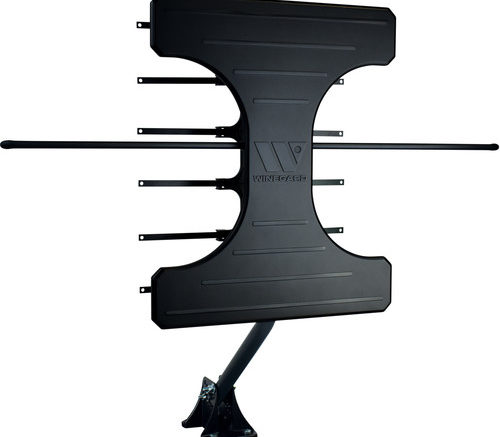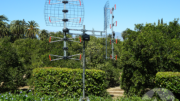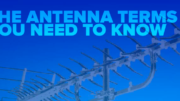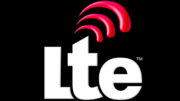I see it all the time. People have their old yagi-style antennas mounted completely backwards. I think it’s because the antenna is sort of shaped like an arrow so they point the small end toward the towers. Sometimes these antennas are up on roofs for years and so obviously they must still work, right? I set out to find out what happens.
The basics of how to aim an antenna
I wrote a whole tutorial on it, but the easiest thing to say is, you point the whole thing toward the towers. Most antennas have “reflectors” which are those panels which stick up and down. The reflectors should either be at the far back or, if they’re in the middle of the antenna, the top and bottom should be closer to the towers than the middle.

In this panel antenna, the X’s should be closer to the towers than the horizontal bars.
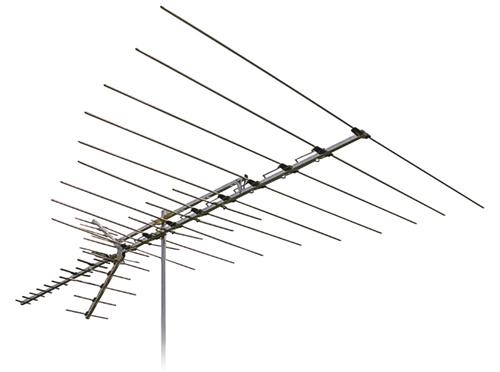
In this yagi antenna, the part on the left should be closest to the towers.
What happens if you aim an antenna backwards?
In some cases it doesn’t make a difference. It generally makes very little difference for VHF at all. UHF is affected since it’s the part served by the reflectors. The reflectors collect extra signal and bounce it onto the back of the receiving element, so you get more signal down the line. If the reflectors are 100% effective, you would think that having the antenna backwards would mean you’d get no UHF signal at all. They’re usually not 100% effective.
Here’s a real world example. I took a Winegard Elite antenna like the one at the top of this article. It has VHF and UHF capability. I aimed it toward the towers, measured, and aimed it exactly away from the towers and measured again. Here’s the data I got.

You can see that on channels 7-13 there isn’t much difference. This is what you would expect from VHF. Forwards wins out by a small margin and this probably has to do with interference from the cable which usually comes out of the back.
Then something interesting happens. Channel 18 actually comes in with the antenna backwards but not forwards. It’s pure luck and it really doesn’t affect the rest of the result.
Starting with channel 22, you can see that having the antenna at 180 degrees really makes things worse. Channels 25 and 34 are pretty similar either way, meaning the reflector probably doesn’t do much there. However, the backwards antenna is missing a whole bunch of channels. Where there is some signal from the backwards antenna it’s genreally a lot lower.
What does this mean?
This is exactly what you would expect if the reflectors are doing their job. When the antenna is backwards, not only is the signal not getting reflected properly, it’s actually being blocked. I guess the message here is that antenna engineers actually know what they’re doing, right? The reflector is doing its job and giving you much better performance from this antenna. Score one for the antenna designers!

